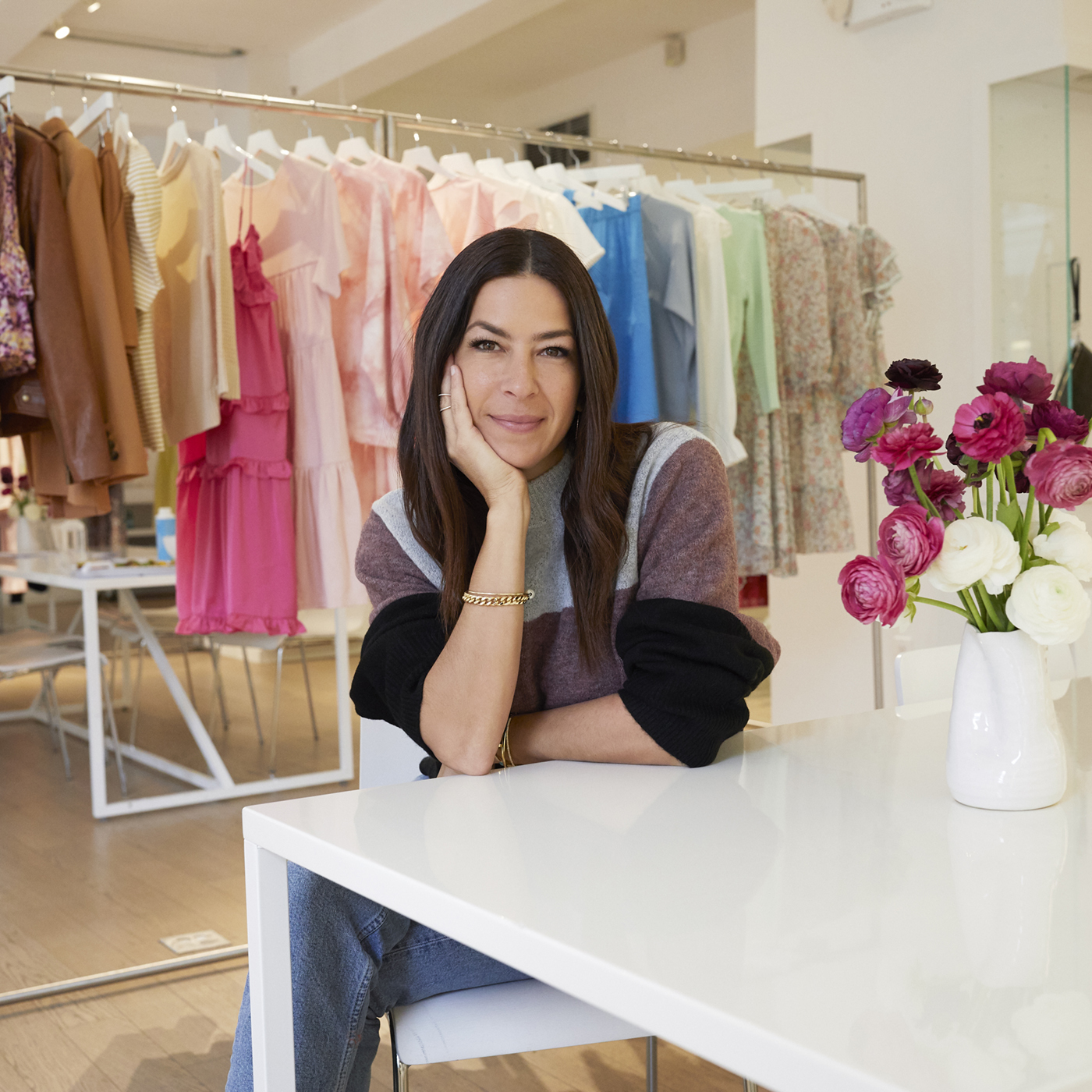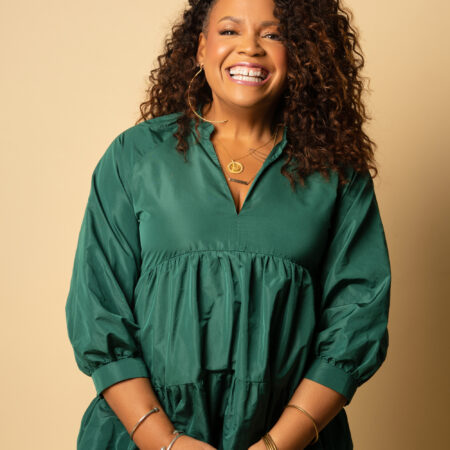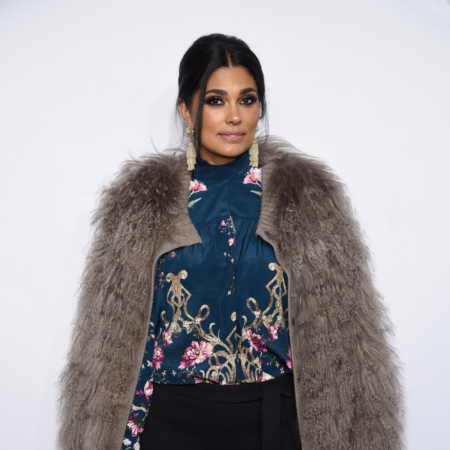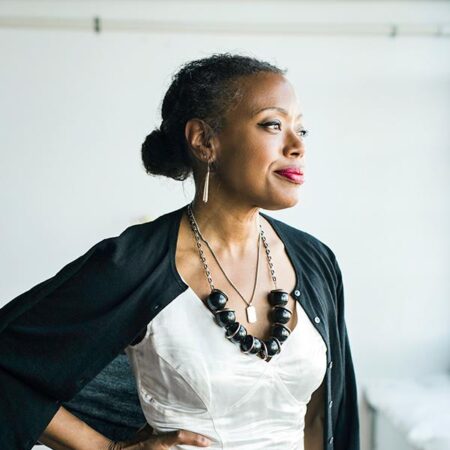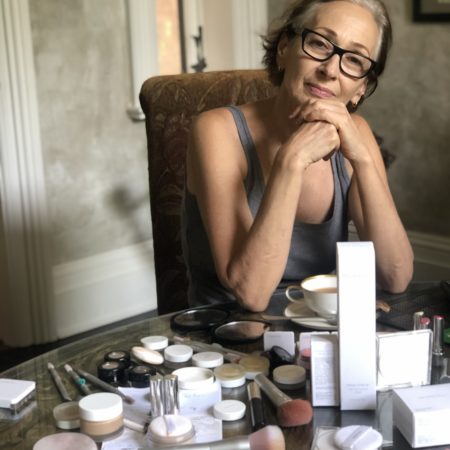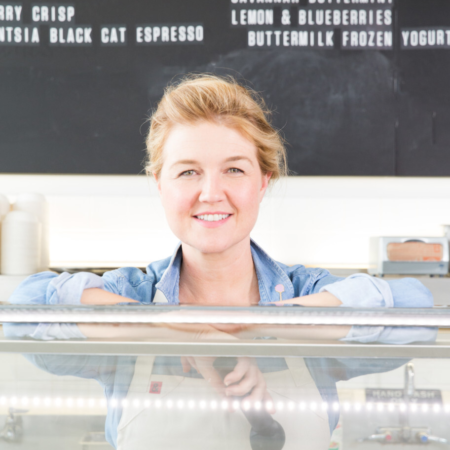Days after 9/11, Rebecca Minkoff, then a burgeoning stylist and budding fashion designer, sent a distressed “I Love New York” T-shirt to Dharma and Greg actress Jenna Elfman, who ended up wearing it for an interview with Jay Leno on The Tonight Show. When Elfman dropped Rebecca’s name on-air, demand for the 21-year-old’s debut five-piece capsule collection instantly spiked.
It was Rebecca’s first taste of stardom, but it wasn’t an instant rise to the top. Over the next four years, she grew her business slowly, selling at boutiques, on consignment, and networking while making clothes in her apartment. Then, in 2005, she designed her “Morning After Bag” (the M.A.B.). When one boutique ordered 12 bags, which sold out immediately, and then re-ordered 75 more, she knew she had a verifiable hit on her hands. Soon, Rebecca was ushering in the age of accessible fashion, and has continued to cater to The Everywoman ever since. Her graphic tees are perennial bestsellers, and she followed up the success of the M.A.B. with the smaller “Morning After Clutch” (M.A.C.), which hovered around an accessible $300.
Strategic, approachable price points, along with a close connection to customers on social media and platforms like her podcast, is what ultimately enabled Rebecca to seamlessly navigate the 2008 recession—and now, the coronavirus crisis. We sat down with the designer to discuss slow-burn success, including why it took her 13 years to turn a profit, and how she made challenging decisions for the long-term endurance of her brand.
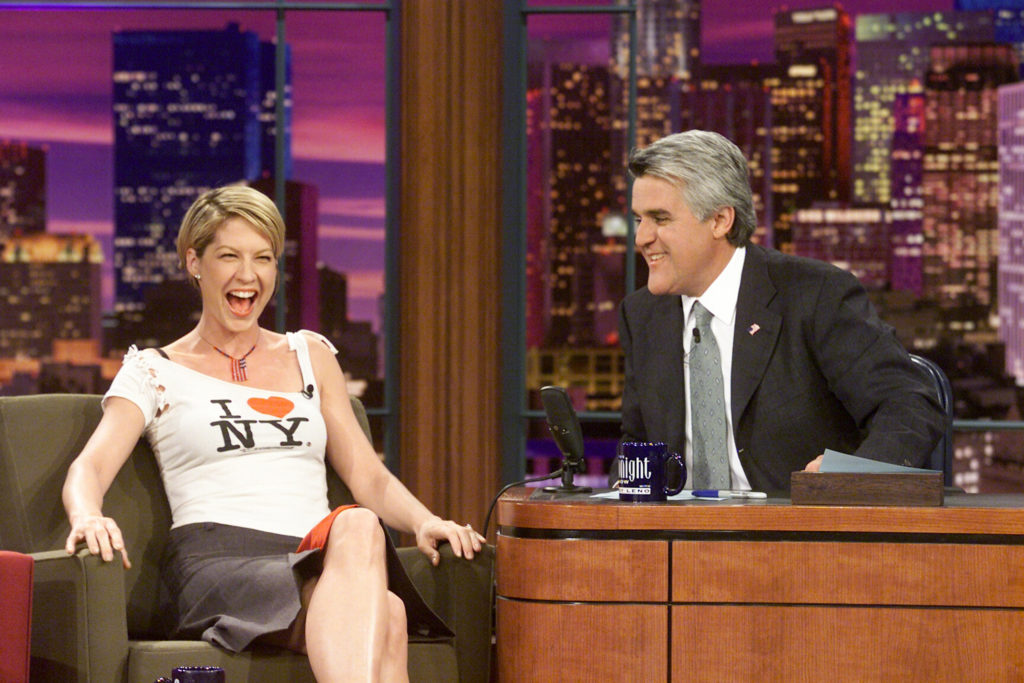
How did you initially finance the brand to get your line off the ground?
Back then, it wasn’t how it is now; I was using my own capital from a different job to fund, whereas today, most companies usually just begin to raise. I was a stylist. That’s how I paid the bills. All my money from styling went into buying goods and fabric. On my own, over four years, I was able to scale to $250,000 in gross sales, which is small. When I decided to launch the bag, I had to go out and raise money for the first time. I asked my dad to loan me money, and he said no. Then my brother helped me out. It wasn’t a blank check, though. In the beginning, he was asking, “How much is it to make the next production run and purchase the leather?” [His contribution] escalated from $2,000 to $25,000—that’s when he began to use his Amex. When we exceeded that credit line, one of his companies had an unused credit line (he had founded several startups), so we started tapping into that. I didn’t know this until way later, but at one point, he mortgaged his house to have extra leverage to keep up with the orders.
Eventually, we just became business partners. There was never an official conversation where we were suddenly in business together, it just became that way. He said, “Listen. I am starting to loan you a lot of money. I want equality, I want these things.” Obviously, that was a no-brainer of a conversation. It was 50/50 to start, and then as he put in additional capital, the equity changed.
What is the biggest benefit of having a good business partner?
It helps in that you are not in an echo chamber. They are skilled in areas you are not, so it’s another perspective on the business. Having my brother on board allowed me to focus on what I did best, too, which was forward-facing, PR, design, marketing, and it allowed him to focus on the business side.
"When your focus is on running a business and not satisfying investors, there’s freedom in that."
You officially incorporated in 2005. You were still a young company right before the recession hit. Do you remember that time? Did you make any business decisions before the recession that helped you survive?
For us, one of the good things that happened right before the recession was that we had a conversation with Bloomingdales or Saks—one of our major retailers. They said, “You did really well and we want to renew the contract. But if you have a ‘5’ in front of your price tag, we won’t be able to put you on the floor.” They said don’t lower the quality either. We had to lower the prices, which was the biggest pivot we made.
It was very difficult to lower prices, but because we did that, it was a time of growth for us. We sold a lot more. We didn’t make money that year, but our sales increased by 548 percent. I think the consumer appreciated that we heard her and we met her at the level that she was at, and she stuck with us and our sales increased. We didn’t lay off anyone [during 2008]. We were in growth mode after that, so we may have hired even more people during that time. From there, we started to make more decisions about professionalizing the organization and readying it for expansion. We were maybe at $20 or $25 million in revenue. There are just certain expectations people have when you are that size, whether it’s the quality control person, a professional production manager, real PR. We just had to start getting real things happening at that time, but we actually didn’t turn a profit until two years ago.
How did you stay afloat during 2008 without making a profit?
We prioritized growth over anything else. Anything that was made was put right back into the business. We didn’t take extravagant salaries or bonuses. It was just this idea of, this is growing, let’s fuel this, while also making sure our customer could afford our bags.
We had a really sharp price point that maybe didn’t have the cushion that some businesses want, but you have to find product-market fit and build traction with the price point you have. It’s much more comfortable to build in a margin where you can make a healthy amount of money, but that’s not what happened for us. I do think we said, “You know, we’ll get there. Let’s just make a really big, stable company, and let this structure fuel its growth, and then we will worry about making money.” We knew there were levers we could pull to make money if we had to, but it was a matter of time. That said, for founders today, I am sometimes giving the opposite advice. I am saying, “It’s okay to grow slow and make money. Then you have something for a rainy day.” If you have a pandemic, you have a slush fund. I think right now, people think the only way [to succeed] is to grow at all costs and take in money at all costs. But find heat first. Find customer demand and sell out of stuff. Really stoke that fire—especially right now, it is a healthier way to do it.
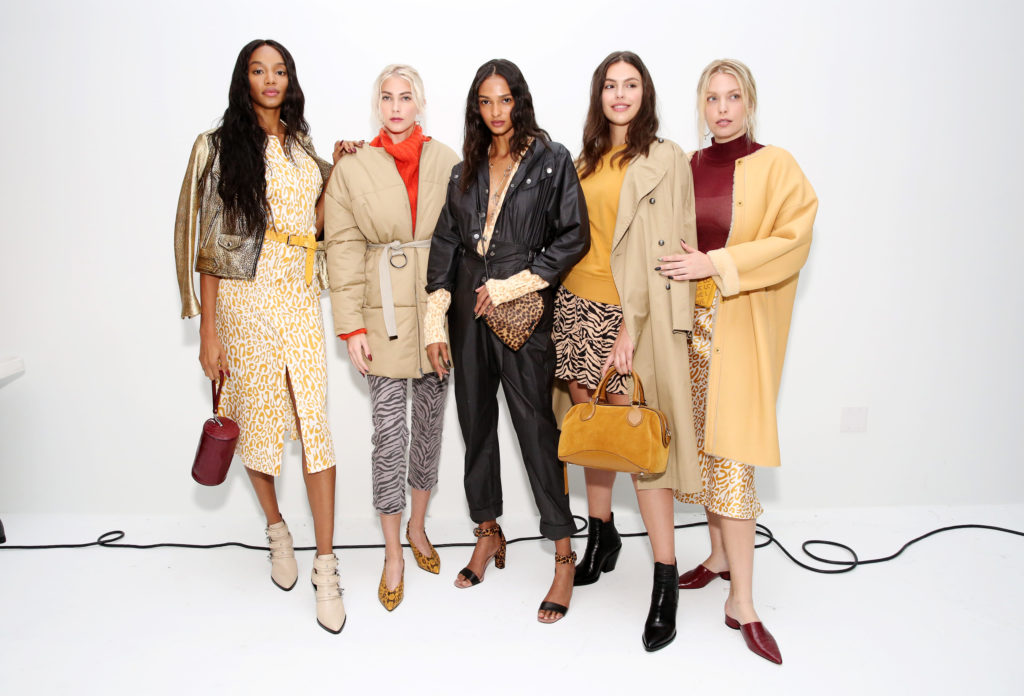
Do you think building your business slowly helped you in any way?
When your focus is on running a business and not satisfying investors, there’s freedom in that. Or, if you do take investment early on, you don’t control as much of your company. By scaling slowly, we still control our company today, and when we did sell [in 2012 to TSG Consumer Partners], we only sold a minority stake in it.
Were there any budget or money management mistakes you made early on?
Tons, and there are still budget and money management mistakes today. Prioritization of what you are spending money on is really a challenge. It’s recognizing the things that are bright and shiny and seem nice to have, and then really zeroing in on what is going to get the biggest bang for your buck. You will get inbounds all day like, “Well, if you have social media, you need this analytics tool,” or, “If you have a website, you need this extra platform.” You can get overwhelmed with all these people that offer you services. Try them, really do these trials, and then figure out what types of services will actually translate into sales and income.
If I could give any advice it would be to encourage founders to build a product that people want and desire that makes money. Find your product-market fit. Stop trying to do business by leveraging debt or capital until you see that there is a heat or desire for your product. I knew the desire was there when I started to see the inbound; people inquiring about stocking it, magazines calling and starting to feature it. It began to have an inbound life versus just an outbound life where it was just me selling.
"Everyone wants to be a unicorn, but not everyone should be a unicorn."
Do you see founders making any major mistakes you’d want to advise against?
Everyone wants to be a unicorn, but not everyone should be a unicorn. Not everyone needs to be a $100 million company. There is something great and beautiful about having a company that does well, and you have a great work-life. Not everyone has to be on the cover of a magazine. As a society, we’ve said, “Okay, this is what it means to be successful.” But there are other paths.
What were some of the core lessons you learned during the early years of your company?
To follow my own path. To really listen to my community. To not be afraid to take risks. I mean, people were in strong disagreement with me talking to our consumers as much as I was online, and with us using influencers. We had definite interventions from our retailers, some of whom threatened that they would not continue to carry us if we talked to influencers around 2008. Those are laughable conversations now.
I think you have to trust your gut and be your own north star. It’s really hard when you are getting all these opinions from every direction. Decide early on who you are going to listen to, and make sure those opinions are coming to you from those with the right experience.
How are you navigating the current crisis?
We’re entering uncertain times, but if you look through history, humans are very resilient and resourceful. We bounce back. Keep tentacles out for feelers and opportunities, new ways to fund your business—the more we can help each other out the better off we’ll be. I am reaching out and doing cross-promotional things with brands that I never imagined I’d work with. A good example of this is Eden Grinshpan. She is a food personality but also a really good friend of mine. I think the audience loves her humor and levity. Maybe people in fashion might want someone who looks perfect all the time and is in couture, but we have done a lot of work together and that’s been beneficial for both of us. If we can help each other, help expose each other to our audiences, that’s great. Don’t be afraid to try stuff.
Did you have any mentors who you really looked to while you were building your business?
I don’t like the word mentor as it’s used today. People expect that it’s someone who hands you their playbook on a silver platter, and you follow it. I didn’t have that. I just had women who kicked my ass and forced me to figure shit out on my own. Sometimes, it was even women I worked with at my own company. That’s a better form of mentorship, in my opinion.
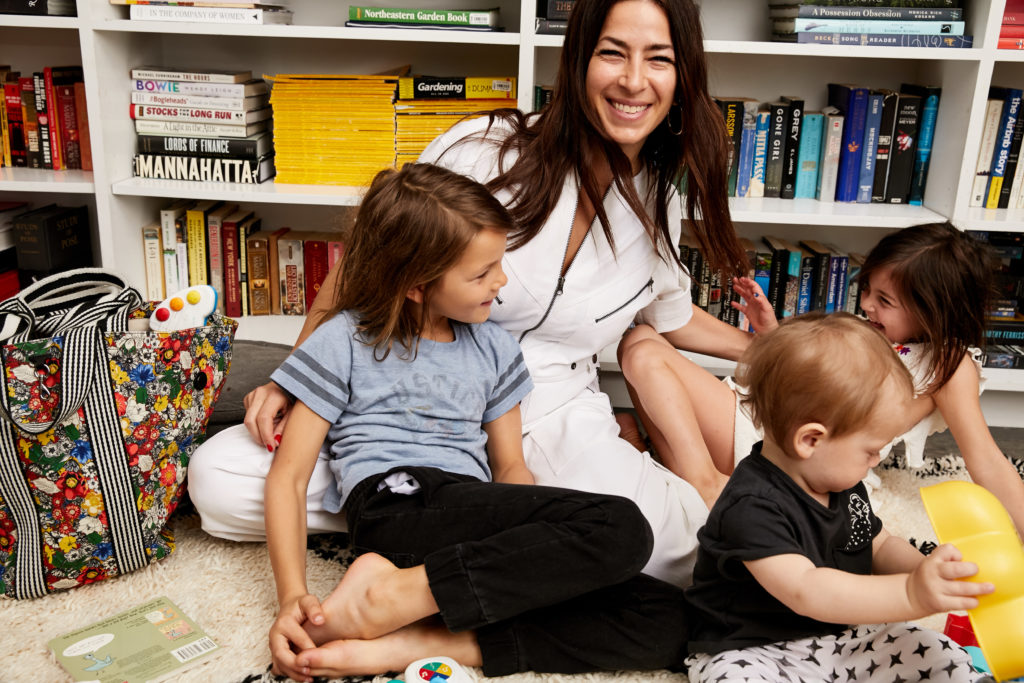
No matter where a founder is at, is there any advice you can give about savoring the moment?
I’m still running after success. The goalposts are always moving. Sometimes we think, “If I just get here, I feel like I’ve made it.” But it doesn’t work that way. You need to stop and celebrate each success; I didn’t do enough of that at all. Even just a day—take a day and just revel in your wins. On my phone, sometimes I’ll look back through the year in photos and think, Wow, that really was a great year. Really celebrate that. Do it with your team if you can. They are all working hard towards the goal, too.
When did you decide you wanted to grow your brand beyond fashion into a platform for women? Tell us about your podcast and the Female Founder Collective.
Probably six or seven years ago, I was disgusted with the lack of support and inclusivity in the [fashion] industry, especially because this industry is so dominated by women. I started throwing dinners with many different women from many different industries, and that was so refreshing to be around. I wanted to open that up to my consumer, too, and do that within my store. You can reach more people if you do that.
The podcast launched at the end of 2018. I was getting so many questions, like, “What’s it like to be a female founder?” Somehow, around that time, that word had entered the zeitgeist. I had never thought of myself as a female founder—I was just someone who was building and running a business. But I figured if I am getting asked that as a fashion designer, we’re polar bears: there are not enough female founders out there. What can I do to ensure there are more of us? The goal of the Female Founder Collective is really three things: Education for founders, access to a community, and a recognizable seal that will denote female-founded companies. Many of our founders start their business with a passion, but they don’t have all the skills required—like most people wouldn’t—to deal with the ins and outs of business. I certainly didn’t when I started, and I’m still not perfect today. So the goal is education.
"I had never thought of myself as a female founder—I was just someone who was building and running a business."
You’ve always been very connected to your consumer. Similarly, brands right now are fostering connection with their customers via social media. How did you focus on that connection? Do you think it helped sustain your brand’s success?
It started in the very beginning; reaching out to [our customer] was my way to understand her. It became natural for me. I frequented this place called the PurseForum [an online shopping community that launched in 2005]. This was the only way I could connect with my customers outside of meeting them in real life—it was sort of like chatting with people in Instagram DMs or comments, but on a forum. The atmosphere allowed me to really look through the different threads, see what people wanted to know more about and be that person who could be there to answer questions. It was before social media, and it was the sole way to chat.
Then, I went on a 30-city tour in 2009 to all these department stores to meet my customers. We did early crowd-sourcing and surveys and polls. In my mind, I knew I could only deliver products and merchandise that’s as good as these women want. So it’s always been an important part of my brand.
Were there any products that came as a direct result of talking to your customers?
A good example might be the “Girl Power” shirt we did right after the election in 2016. I just thought, ‘Women need to come together right now. How can we create something that can say how you feel and not to be derogatory in any way?’ Then there was the update on our old-school wallet. I was hearing a lot of women say, “We want to go out of the house with as little-to-nothing as we can.” The Wallet on a Chain was born out of that. It holds your wallet essentials and a phone, and it’s in a crossbody form.
You’ve stopped doing traditional runway shows. What was behind that decision?
We didn’t quit doing traditional runway shows; we transitioned to see (with social media showing everyone everything) that our customer actually desired to have these goods now. So whether we ever go back to a runway show or presentation, I think our goal is to keep it something that is “see now, buy now.”
What’s next for the Rebecca Minkoff brand?
On the product side, I want to launch a full lifestyle brand with more categories. We just launched kids a few weeks ago, and plan to launch fragrance in October. There’s also beauty, home, and a lot of untapped areas.
Beyond products, I think we want to have a community of women. I always love when I hear stories from women, like “I bought your bag when I got a raise,” or, “I bought your bag when I got my first job, or when I was breaking up with this guy.” I want to make sure we are a “milestone moment” brand, as much as we can. On the community side, just giving women what I didn’t have when I started, whether it’s a sense of community, resources, or support.
*This interview has been edited for length and clarity
